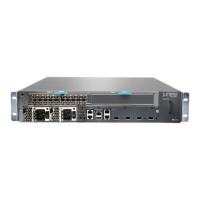Table 22: Cabinet Requirements and Specifications for an MX5, MX10, MX40, and MX80 Router
Guidelines for the MX80 RouterCabinet Requirement
•
The minimum-sized cabinet that can accommodate the router is 19-in. (482-mm)
wide and 23.62-in. (600-mm) deep. A cabinet larger than the minimum requirement
provides better airflow and reduces the chance of overheating. If you provide adequate
cooling air and airflow clearance, you can stack several routers in a cabinet that has
sufficient usable vertical space. Each router requires 2 U.
A U is the standard rack unit defined in Cabinets, Racks, Panels, and Associated
Equipment (document number EIA-310-D) published by the Electronic Components
Industry Association (ECIA) (http://www.ecianow.org).
•
With adequate cooling air and airflow clearance, you can stack multiple MX5, MX10,
MX40, and MX80 routers in a cabinet with a four-post rack. In all cases, the rack must
meet the strength requirements to support the weight.
•
The minimum total clearance inside the cabinet is 30.7 in. (780 mm) between the
inside of the front door and the inside of the rear door.
Cabinet size and clearance
When you install the router in a cabinet, you must ensure that ventilation through the
cabinet is sufficient to prevent overheating. Consider the following requirements to
when planning for chassis cooling:
•
Airflow must always be from front to back with respect to the rack. If the device has
side to rear airflow, then provisions must be made to ensure that fresh air from the
front of the rack is supplied to the inlets, and exhaust exits the rear of the rack. The
device must not interfere with the cooling of other systems in the rack. Fillers must
be used as appropriate in the racktoensurethere is no recirculationof heated exhaust
air back to the front of the rack. Care must also be taken around cables to ensure no
leakage of air in situations where recirculation may result.
•
Ensure that the cabinet allows the chassis hot exhaust air to exit from the cabinet
without recirculating into the router. An open cabinet (without a top or doors) that
employs hot air exhaust extraction from the top allows the best airflow through the
chassis. If the cabinet contains a top or doors, perforations in these elements assist
with removing the hot air exhaust. For an illustration of chassis airflow, see
Figure 28 on page 49.
•
Ensure that the cool air supply you provide through the cabinet can adequately
dissipate the thermal output of the router.
•
Route and dress all cables to minimize the blockage of airflow to and from the chassis.
•
Ensure that the spacing of rails and adjacent racks allows for the proper clearance
around the router and rack as specified in “MX5, MX10, MX40, and MX80 Routers
Clearance Requirements for Airflow and Hardware Maintenance” on page 47.
•
Install the router as close as possible to the front of the cabinet so that the chassis
just clears the inside of the front door. This maximizes the clearance in the rear of the
cabinet for critical airflow.
Cabinet airflow requirements
Figure 28: Airflow Through Chassis
g005016
Front view
airflow
Fan tray/
air filter
Power supply exhaust
49Copyright © 2017, Juniper Networks, Inc.
Chapter 7: Preparation Overview

